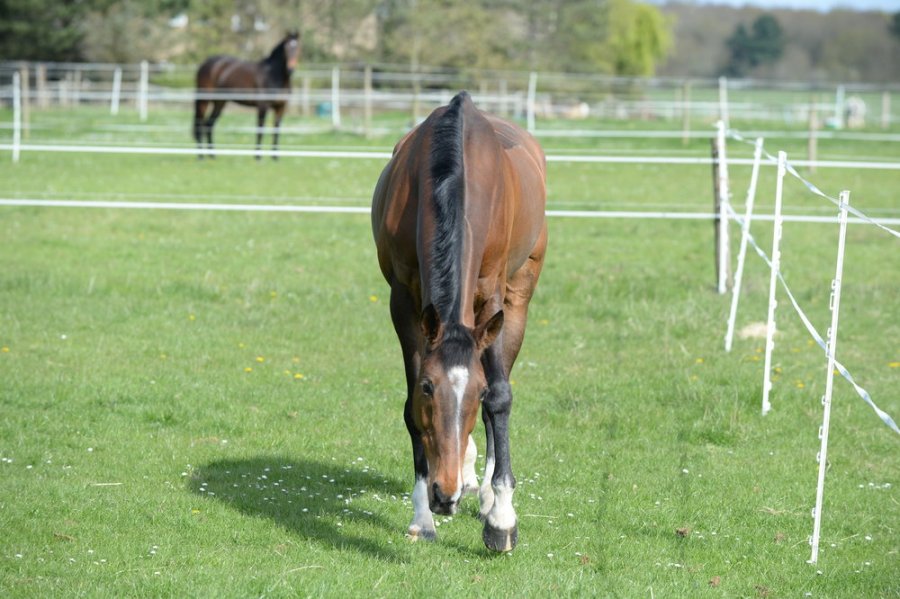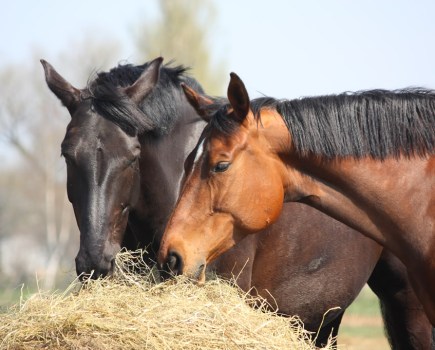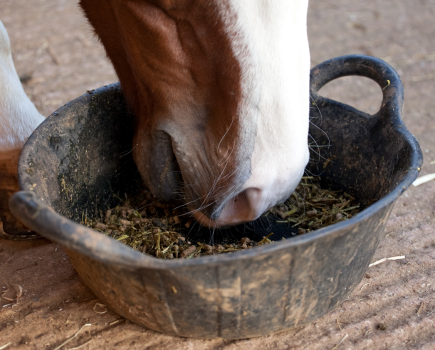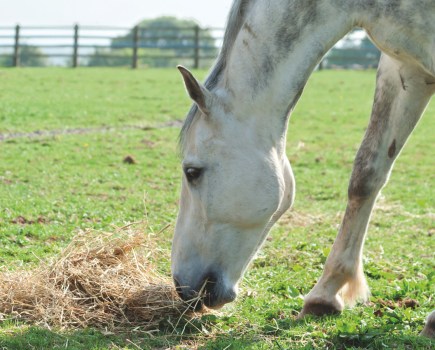Decrease your horse’s risk of laminitis by following expert advice from Spillers nutritionist Clare Barfoot.
as we begin to turn our horses out to grass for longer periods of time, it’s essential to be mindful of the risk of laminitis. SPILLERS® registered nutritionist Clare Barfoot brings you eight, easy to follow, tips to help keep your horse or pony safe this spring.
1. Act sooner rather than later
The grass starts to grow actively when the soil temperature consistently reaches 5 degrees and can be very calorific! For every kilogram (dry matter) eaten, your horse may consume up to 75g of sugar and 500g of Water Soluble Carbohydrate (WSC). Studies have shown that un-muzzled ponies can consume up to 5% of the own bodyweight in grass. For a 500kg horse, this would equate to a whopping 1.9kg of sugar and 12.5kg of WSC per day from grass alone.
2. Slim your horse down
If your horse is overweight use what’s left of the colder weather to instigate a slimming programme. Reduce feed or change to a lower calorie alternative and switch to a lower energy forage. Soaking hay for at least three hours, or ideally up to 16, will reduce the WSC level, making it safer for those susceptible to laminitis.
3. Use fewer rugs
Fewer rugs or no rugs at all will cause your horse to have to burn off a few extra pounds to keep warm.
4. Restrict time out at pasture
Consider turning your horse out at night when the grass will contain less fructan (a storage form of sugar). Install a strip grazing system to moderate the amount of grass your horse has access to.
5. Try a grazing muzzle
A grazing muzzle can reduce intake by up to 80% but it must be properly fitted, allow drinking and you must allow your horse time to get used to it before leaving it on for long periods of time. Try it out in his stable before so you can stay around and observe how he reacts to it. Extend the period of time he wears it for each time until he’s happy to have it on.
6. Feed an alternative safe source of forage
For horses and ponies at very high risk of laminitis consider removing them from pasture altogether. Instead feed them a suitable forage of short clipped fibre that’s approved by the Laminitis trust.
7. Beware of late frosts
On sunny mornings fructan can accumulate to high levels, which can trigger a snowball effect of events eventually leading to laminitis.
8.Get him moving
Regular exercise will help keep your horse’s waistline in check and support a healthy metabolism.
Seek advice from the experts
For free advice on how to help keep your horse safe from laminitis ring a friendly SPILLERS® Care-Line advisor on 01908 226626 or visit www.spillers-feeds.com









